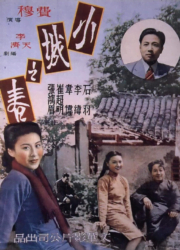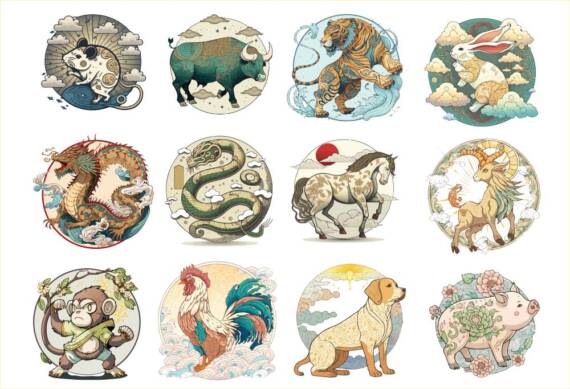How Chinese Films Can Help Language Learners

Chinese cinema is a treasure trove of cultural richness, historical depth, and linguistic diversity. It’s not just about entertainment. It’s a window into the soul of a nation with a history spanning thousands of years. For those interested in learning Mandarin Chinese, Chinese language films offer an immersive experience that textbooks alone cannot provide.
Just like using Chinese TV shows to learn Chinese, movies allow us to hear the language as it’s naturally spoken, complete with all its nuances, accents, and colloquialisms. Let’s explore the fascinating world of Chinese language films and their potential as a tool for Mandarin Chinese language learning.
Related Reading: The Hanzi Movie Method (Part 1): The Best System of Chinese Character Mnemonics
History of Chinese cinema
Chinese cinema traces its roots back to the early 20th century. The first Chinese film, The Battle of Dingjunshan, was produced in 1905. Since then, the industry has evolved significantly, reflecting the socio-political changes in mainland China, Hong Kong, and Taiwan.
The Golden Age of Chinese cinema in the 1930s and 1940s saw the emergence of critically acclaimed films like Street Angel and Spring in a Small Town. Post-1949, the industry was used as a tool for propaganda by the Communist Party, leading to a distinct style of socialist cinema.
The late 20th century marked a significant turning point for Chinese cinema with the emergence of the Fifth Generation filmmakers, who went on to make some of the best Chinese films of all time. This group of filmmakers, which included prominent figures like Zhang Yimou and Chen Kaige, graduated from the Beijing Film Academy in the early 1980s following the end of the Cultural Revolution.
Their emergence coincided with the liberalization policies of Deng Xiaoping, which allowed for greater artistic freedom and creativity.
Zhang Yimou and Chen Kaige, among others, brought a fresh perspective to Chinese cinema, moving away from the socialist realism of the previous era. Their films were characterized by a strong visual style, innovative narrative structures, and a focus on individuals and their personal experiences rather than grand political narratives. It was a seismic visual shift, and these aren’t just some of the best Chinese films ever made, but some of the best films full stop.
This was a stark departure from the propaganda films of the Mao era, and it marked a new chapter in Chinese cinema.
Zhang Yimou’s films, such as Red Sorghum (1987) and Raise the Red Lantern (1991), are renowned for their incredible visual imagery and exploration of themes like gender, power, and tradition. His work has received numerous international awards and nominations, including a Grand Jury Prize at the Cannes Film Festival for Ju Dou (1990) and two Academy Award nominations for Best Foreign Language Film.
Chen Kaige, another leading figure of the Fifth Generation, gained international acclaim with Farewell My Concubine (1993), a film that explores the lives of two Peking Opera actors over several decades of political upheaval in China. The film won the Palme d’Or at the Cannes Film Festival, making it the first Chinese language film to win the top honor at the prestigious festival.
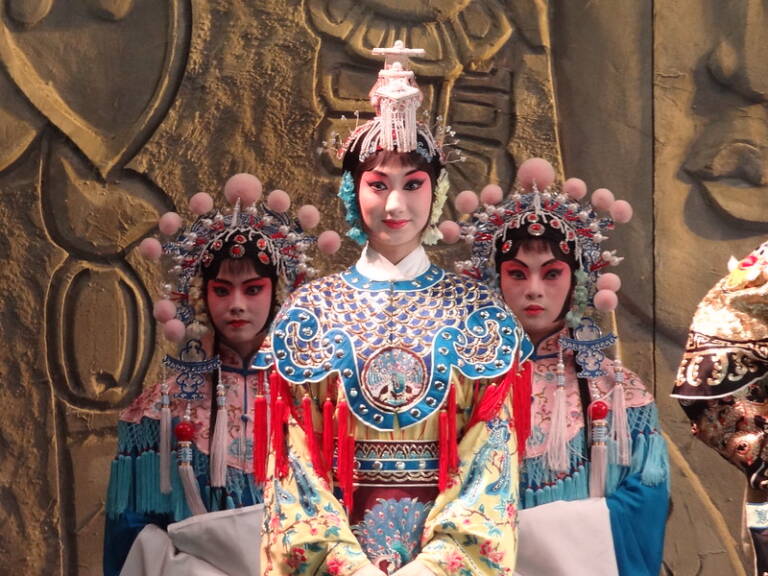
Farewell My Concubine (1993)
The Fifth Generation filmmakers played a crucial role in bringing Chinese cinema to the global stage. Their films were not only commercially successful but also critically acclaimed, winning awards at major international film festivals. They introduced the world to Chinese culture, history, and society through their unique cinematic lens, and in doing so, they made Mandarin Chinese a language of global cinema. Their influence continues to be felt in the works of subsequent generations of Chinese filmmakers.
Related Reading: Can You Learn Chinese In 5 Minutes?
Chinese films for language learners
Chinese cinema, with its diverse range of films, provides an immersive and engaging way to learn Chinese Mandarin. When you watch a film, you’re not just passively absorbing information; you’re actively engaging with the language in a contextual environment.
This helps you understand how words and phrases are used in real-life situations, making the Mandarin Chinese language learning process more effective and enjoyable.
Take, for example, the film In the Mood for Love by Wong Kar-wai. This film is a masterpiece of visual storytelling, but it’s also a fantastic resource for those learning Chinese. The dialogue is explosive, with expressions of love, longing, and regret, providing you with a tremendous amount of vocabulary and phrases related to emotions and relationships. Not just that, but the film’s setting in 1960s Hong Kong offers insights into the culture and social norms of the time, helping you understand the cultural meaning behind the language.
It’s worth mentioning though, that Kar-wai doesn’t stick to Mandarin. In most of his films, his characters switch between Mandarin and Cantonese, often in the same conversation and without referencing the switch. Author Steven Schwankert called Kar-wai’s movies “a kind of radical utopianism, a fantasy of a world in which Chinese people can all get along in perfect understanding.”

In the Mood for Love (2000)
Crouching Tiger, Hidden Dragon, directed by Ang Lee, is another excellent film for Mandarin Chinese language learning. This martial arts epic is not only entertaining but also linguistically intense. The dialogue is filled with Chinese sayings, proverbs, and quotes, all in an especially poetic language, offering you a chance to explore the more formal and literary aspects of Mandarin.
What’s even more important is that the film’s study of themes like honor, duty, and love provides a window into Chinese cultural values and philosophies.
Chinese cinema encompasses a wide range of genres, from historical dramas and martial arts epics to modern rom-coms and indie films. Each genre offers unique verbal styles and dialects. For instance, historical dramas often feature formal and classical language, while modern films use contemporary, colloquial Mandarin. Films from different regions of China also showcase various dialects, exposing learners to the diversity of the Chinese-speaking world.
Language isn’t just a system of signs and symbols; it’s a reflection of a society’s culture, history, and values. Chinese language films, with their potent narratives and authentic portrayals of Chinese life, offer you a deeper understanding of the cultural meaning behind the language. They show how language is used in different social situations, how it changes over time, and how it reflects a society’s values and beliefs.
It’s safe to say that Chinese cinema is a goldmine for those looking to learn Chinese Mandarin. It delivers an engaging and effective way to learn Mandarin, introducing a wide range of dialectal styles and providing you with a deeper understanding of the language.
So, the next time you’re studying Mandarin, consider taking a break from the textbooks and watching a Chinese-language film instead. You might be surprised at how much you can learn.

Related Reading: Chinese Fluency: How Long Does it Take with Mandarin Blueprint?
Notable directors and films for language learning
Let’s chat more about the notable directors and their films that have shaped Chinese cinema and can serve as excellent resources for Mandarin Chinese language learning.
Zhang Yimou is a prominent figure in Chinese cinema, known for his visually stunning films that often delve into the human condition and Chinese society. Besides Raise the Red Lantern, his other notable films include To Live and The Story of Qiu Ju. These films not only provide a fantastic language experience but also offer snapshots into Chinese history, culture, and society.
Chen Kaige, another influential director, is best known for his film Farewell My Concubine. However, his other works, like Yellow Earth and The Emperor and the Assassin, also offer plenty of phonetic and cultural learning opportunities. His films often explore themes of history, identity, and societal change, providing a context-rich environment for language learning.
Ang Lee, a Taiwanese director, on top of the classic Crouching Tiger, Hidden Dragon, has made significant contributions to Chinese cinema with films such as Eat Drink Man Woman. His films are known for their deep emotional resonance and exploration of cultural and personal identities. They provide an excellent opportunity to learn Chinese Mandarin in a variety of settings, from the familial interactions in Eat Drink Man Woman to the historical spectacle of Crouching Tiger, Hidden Dragon.
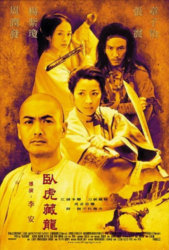
Crouching Tiger, Hidden Dragon (2000)
For beginners, dubbed animated films like Kung Fu Panda and the original version of Mulan are great starting points. They offer a simple, clear dialogue that’s easier for beginners to follow. Plus, they provide cultural context and introduce basic vocabulary and phrases.
As you become more proficient, you can explore more complex films. Films that intermediate and advanced learners might consider include In the Mood for Love by Wong Kar-wai, known for its poignant exploration of love and longing, and Infernal Affairs, a thrilling crime drama from Hong Kong that showcases a modern, urban linguistic environment (including those all-important cuss words).
Chinese cinema offers a huge range of resources for language students at all levels. From the visually stunning epics of Zhang Yimou to the emotional depth of Ang Lee’s films, there are plenty of learning opportunities waiting to be explored.
Language and dialects in Chinese cinema
Chinese cinema showcases a variety of dialects, including Mandarin, Cantonese, and regional dialects. Films like Infernal Affairs (Cantonese) and To Live (Mandarin) give you a chance to hear these dialects in action. Understanding these dialects is crucial as they are an integral part of Chinese culture and identity. And, as a bit of a side note, cinema plays a vital role in preserving and popularizing these dialects.
Cultural context in Chinese films
Chinese films, in their myriad forms, serve as a mirror reflecting the country’s stunning and diverse culture. They offer a cinematic journey through China’s long history, its traditions, societal norms, and the changing dynamics of its modern society.
From historical dramas set in imperial courts to contemporary stories unfolding in bustling cities, these films provide a visual and auditory tapestry of China’s cultural landscape.
Language, in these films, isn’t just a medium of communication — it’s a tool for expressing cultural identity. The way characters speak, the words they use, the idioms and phrases they choose, all these elements are imbued with cultural significance. They offer glimpses into Chinese thought, philosophy, and worldview.
Let’s look at, for example, the use of formal language in period dramas. In Curse of the Golden Flower, a film set in the Later Tang Dynasty. Here, the characters use a highly formal and polite form of speech, reflecting the etiquette and hierarchical structure of the time. The emperor, for instance, is addressed with the highest respect, reflecting his supreme status in the societal hierarchy.
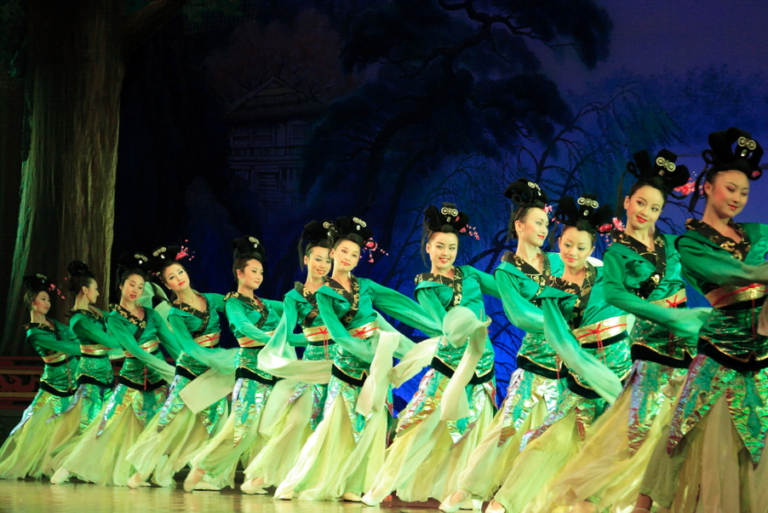
This use of language provides a cool look into Chinese etiquette, respect for authority, and the importance of social hierarchy, all of which are key aspects of Chinese culture.
Similarly, films set in modern times reflect the changes in language use and societal norms. For instance, in Lost in Beijing, the characters use contemporary, colloquial Mandarin, reflecting the language evolution in a rapidly changing society. The film also explores modern societal issues like economic disparity and migrant workers, offering a glimpse into the complexities of contemporary Chinese society.
Understanding these cultural nuances is essential for anyone learning Chinese. It’s not just about learning words and grammar. Instead, it’s about understanding the cultural context in which the language is used. It’s about understanding how language reflects societal norms, values, and beliefs. Chinese films, with their vivid narratives and authentic portrayals of Chinese life, offer a unique and engaging way to gain these insights.
Chinese films are more than just entertainment; they are a window into the soul of Chinese culture and society. They offer an expressive environment for learning the Chinese language, making them an invaluable resource for language students.

Subtitles and dubbing
Subtitles can be a language learner’s best friend. They serve as visual aids that complement the auditory experience of watching a film. For beginners, subtitles can be especially helpful as they provide immediate translations of spoken dialogue. This can aid in understanding the plot, picking up new vocabulary, and getting a feel for Chinese sentence structure.
Subtitles can also help you understand the reason why certain words or phrases are used. For instance, a word that has multiple meanings might be used in a specific way in the film, and the subtitle can help clarify which meaning is intended. Subtitles can also help you understand idiomatic expressions, enough slang to be able to speak like a native, and cultural references that might not be immediately clear from the spoken dialogue alone.
Dubbing can also be a useful tool for intermediate and advanced learners. Dubbed films replace the original audio with a voice-over in your target language. This can help improve listening skills as it allows you to focus on understanding spoken language without relying on visual cues from subtitles. It can also help you get used to the pace, rhythm, and intonation of the spoken language.
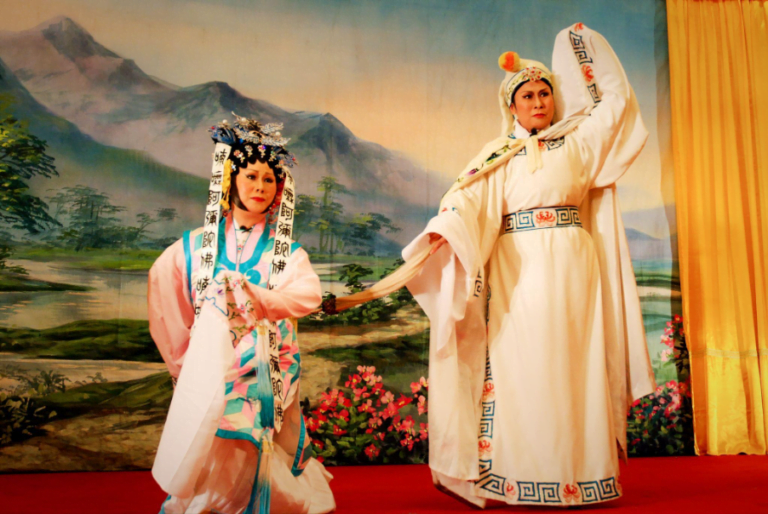
Photo by Jeffrey Ma
The problem with dubbing is that it can sometimes lose nuances of the original performance, and the lip movements of the actors won’t match the spoken words. So, it’s often recommended to watch films in the original language with subtitles first and then try watching dubbed versions as your proficiency improves.
Using these tools effectively requires a strategic approach. One effective method is to watch a film multiple times, each time with a different focus. For instance, you might watch a film with subtitles first to understand the plot and pick up new vocabulary. Then, you could watch the film again without subtitles to test your comprehension and improve your listening skills.
Of course, for advanced students, watching a film without subtitles can be a good way to challenge yourself.
Subtitles and dubbing are great tools for learning a new language. They can help with vocabulary acquisition, improve your listening skills, and provide a unique environment for language learning. However, like any tool, they need to be used strategically to maximize their benefits.
Strategies for learning Chinese through cinema
Start by choosing films that match your proficiency level. Use subtitles initially, then try to watch without them. Pause and replay difficult sections, and don’t be afraid to use a dictionary. Building vocabulary and improving your listening skills are natural outcomes of this process. Engaging with Chinese-speaking communities and online forums can further enhance your Mandarin Chinese language learning experience.
Lights, camera, Mandarin
There are plenty of resources available to help you learn Chinese, but Chinese cinema, with its diverse range of films and extremely eloquent storytelling, offers an immersive and engaging way to learn Chinese Mandarin. Unlike traditional language learning resources like textbooks or classrooms, films provide a more immersive (and entertaining) environment that brings the language to life.
You’re not just learning words and grammar.
You hear the language as it’s naturally spoken, complete with all its nuances, accents, and colloquialisms.
So, grab some popcorn, sit back, and let the best Chinese films guide you on your Mandarin Chinese language-learning journey. Whether you’re a beginner starting with animated films or an advanced learner diving into complex dramas, there’s a Chinese film out there that can help you improve your Mandarin.
Related Reading: The Ultimate Guide to Learning Chinese Online

